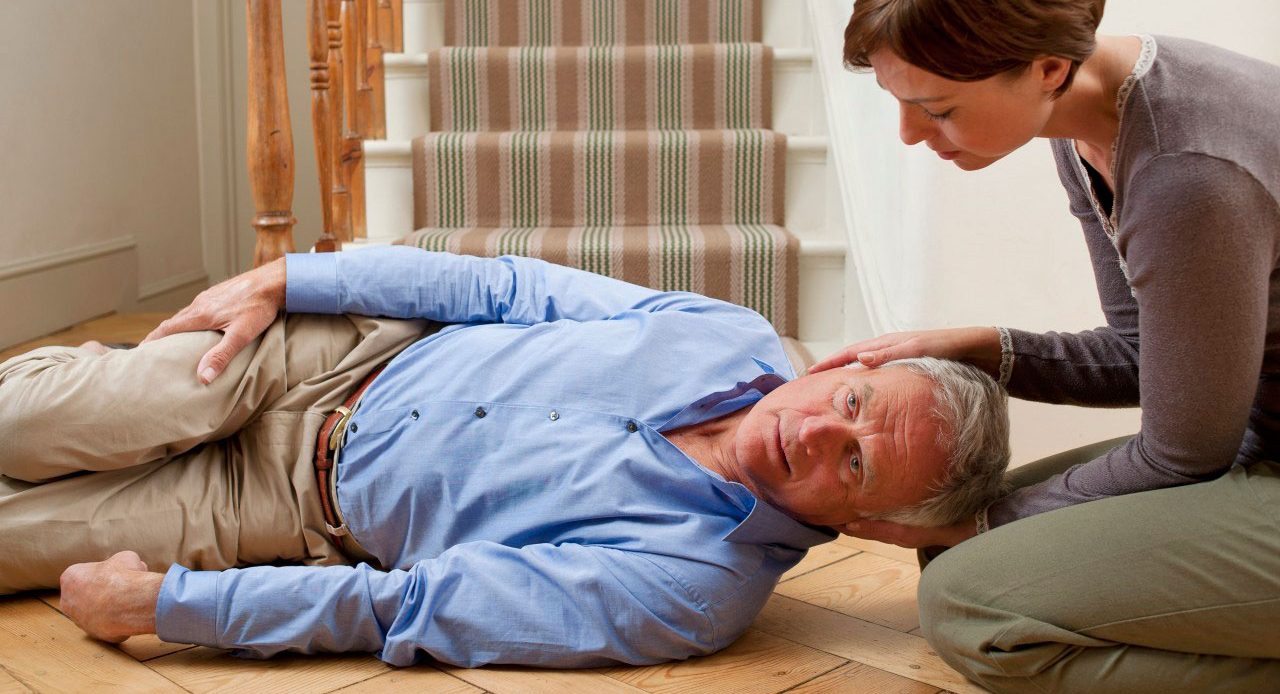Caring for an Elder with Balance Problems

One in three older Americans falls every year.
It’s common for seniors to fall, and too often leads to a cascade of misfortune: hip fractures, head injuries, time in rehab centers, and anxiety about another fall. That’s why helping an aging parent, grandparent, neighbor, or friend cut their risk of falling is an essential way to help them stay independent — and need less care from you and other caregivers.
YOU MIGHT ALSO LIKE: Exercise Can Reduce Falls and Fractures
As we age, we lose coordination, flexibility, and balance — primarily through inactivity, making it easier to fall. So encourage your loved one to stay active. Less light reaches the retina in elderly eyes — so it’s harder to see obstacles in your path. Some prescriptions and over-the-counter medications can cause dizziness, dehydration, or interactions with each other that can lead to a fall.
Anxiety sets in after that first tumble, even if it’s minor. After a fall, as many as half of seniors say they lose confidence and become less active, which can make them less fit and more likely to fall again. And as many as a half do fall again within a year.
Some tips: Ask your mother or aunt about her last eye checkup and if she’s using her glasses as advised with a current prescription. Tint-changing lenses can be hazardous when moving from bright sun into darkened buildings and homes. Suggest changing glasses inside or sitting down until the lenses adjust. Bifocals also can be problematic on stairs.
Note if you see a senior holding onto walls, furniture, or someone else when walking or if they appear to have difficulty walking or arising from a chair.
To test your loved one’s chance of a fall, ask her to stand on one leg for up to 30 seconds with her eyes open. In one study, the chance of a hip fracture dropped by 5 percent for every second they could stand on one leg.
If it’s a struggle to balance on either side for at least 20 seconds, you might consider asking a doctor to evaluate her risk of stroke. People who can’t pass this test have been shown to be more likely to have damage to small blood vessels in the brain even if they had no other symptoms.
Also suggest seeing a physical therapist, who can provide exercises that will boost balance and strength. It’s not necessary to go outside: She can try standing on one foot while brushing her teeth, building up strength, then switch sides. Another tip is to walk heel-to-toe, positioning your heel in front of the toes on your opposite foot each time you take a step along an imaginary line. Your loved one may enjoy swim aerobics, yoga, tai chi, Pilates, Feldenkrais, Alexander, or dance classes, often designed for seniors.
YOU MIGHT ALSO LIKE: So Your Gym Is Offering What?
If your loved one decides to use a cane or walker, be sure that a physical therapist has checked it for the proper fit. The wrong size can actually up the chances of a fall.
Using a timed medication dispenser or simply a sorter will help your loved one take medications in a way that avoids bad interactions. An over-the-counter product with “PM” in the name may include a sleep aid that can cause dizziness.
Walk through the home with your loved one to see if it is as safe as possible. You may need to install better lighting, especially at the top and bottom of stairs and on steps outdoors. Curtains and shades reduce glare. Be sure that it’s easy to turn on lighting when going to the bathroom during the night. Grab bars in the tub or shower and near the toilet should be installed in a spot where they’ll actually be used. A shower chair and hand-held shower head may be safer still. Use non-slip mats in the bathtub and on shower floors. Clear any items like papers, books, clothes, and shoes from the stairs or walking areas. Remove small throw rugs or use double-sided tape to keep the rugs from slipping.
Keep items your loved one uses often in cabinets she can reach easily without using a step stool.
Wearing shoes inside the house is safer than wearing slippers or going barefoot.
If your loved one develops ongoing balance issues, or has recently fallen and injured herself, someone will need to step in and provide care. More than six million people in the U.S. provide substantial care for older adults, on average 28 hours a week, according to research analyzing over 1,700 caregivers published in JAMA Internal Medicine.
You might assume that all of these caregivers are becoming worn down or running into conflict with job and other responsibilities. Actually, most don’t report major problems. A quarter said caregiving had caused them money trouble, and a third said that their responsibility was taking a big emotion toll. Stay out of that anxiety zone by helping the person you love avoid falls.
YOU MIGHT ALSO LIKE: Good Balance Requires Mental and Physical Fitness
Resources
- The Centers for Disease Control and Prevention has a tip sheet on how to avoid falls and lists of community programs.
- In this short video, you’ll see a senior guided through getting up after a fall.
- Try this 15-minute video workout from the AARP (scroll to the bottom of the page).
- Gerontologist Jon Pynoos, co-director of the Fall Prevention Center of Excellence in Los Angeles, offers an excellent brochure on home modification.
- The National Council on Aging has a library of resources on programs that prevent falls.
- See a list of “Stepping On” programs, a class to prevent falls, across the nation.
Updated:
April 07, 2020
Reviewed By:
Janet O’Dell, RN